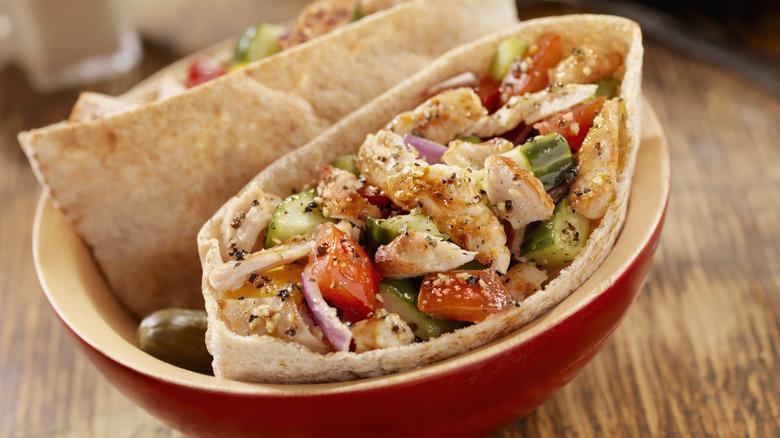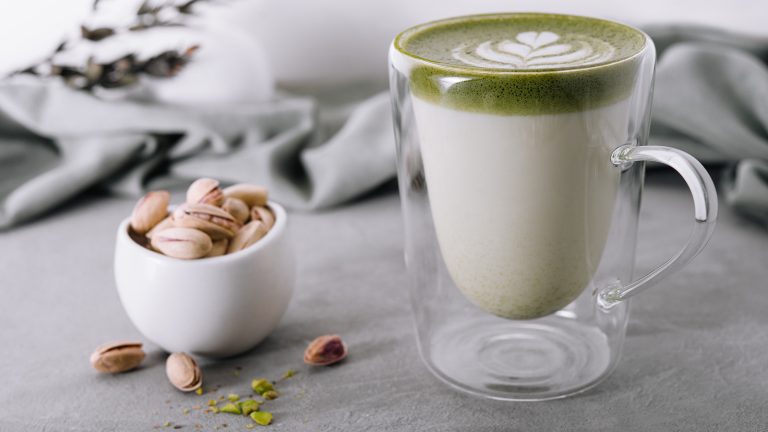Pita bread is a delightful base for an entree or appetizer alike, its fluffy, tangy dough a perfect accompaniment to any number of dishes and flavor profiles. The only downside when it comes to making your favorite pita sandwich can be in the assembly stage — namely, how to handle the pita so it doesn’t tear or fall apart upon being laden with delicious fillings. The answer may come down to how you fold it, according to Sonia Khosla of Love Incredible Recipes.
“Trimming and flipping the pita bread back into the bottom of the pocket helps create a more solid structure for the pita,” Khosla told Food Republic. If that sounds confusing, don’t worry — it’s actually quite simple. Just make a straight-line cut across the top of the pita so that you remove the top inch and a half of the bread. Then turn the now-removed slice upside down and insert it into the bottom of the remaining pita pocket, open side up.
“Pita bread can sometimes be a little flimsy when it’s first split open, so this technique reinforces the pocket, making it less likely to tear,” Khosla said. “Additionally, it provides a sturdier base to hold the fillings together and keeps them from spilling out as you eat.” Once you’ve made this change, you can use the pita for your favorite meal — say, a spiced lamb in toasted pita sandwich — without fear of it falling apart.
Tricks to getting the perfect pita texture
One of the most common hazards of a pita sandwich is that the bottom is prone to breakage as you eat it, due to the accumulation of delicious but starch-destroying liquids. That’s another reason Sonia Khosla finds this trick so valuable. “It’s not just structural — it also helps the pita hold up better when filled with juicy ingredients like grilled meats, hummus, or salads,” she told us.
This trick is just one way to keep the integrity of the sandwich intact, whether you’re trying to make giant doner kebabs, shawarma, or falafel. Another key is the order in which you add your filling, and exercising restraint when it comes to the ones that bring the most moisture. “To prevent sogginess, avoid overfilling the pita with overly wet ingredients,” Khosla advised. “Layering dry ingredients at the bottom of the pocket first (like lettuce or herbs) before adding the wetter fillings will keep the bread from becoming too soggy.”
If you’ve had issues with your pitas breaking or tearing unevenly when you try to prepare them — whether for a savory sandwich or a simple but delicious no-crust pita PB&J — Khosla suggested two approaches to soften the bread before use. “Warm the pita in a dry pan for a few seconds on each side or wrap it in a damp paper towel and microwave it for [20 to 30] seconds. This will help make the bread pliable and prevent it from cracking when you open it,” she recommended.






